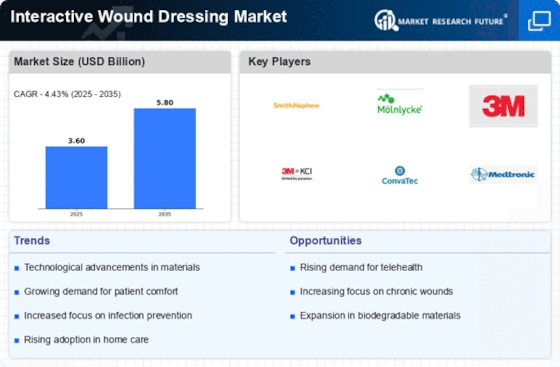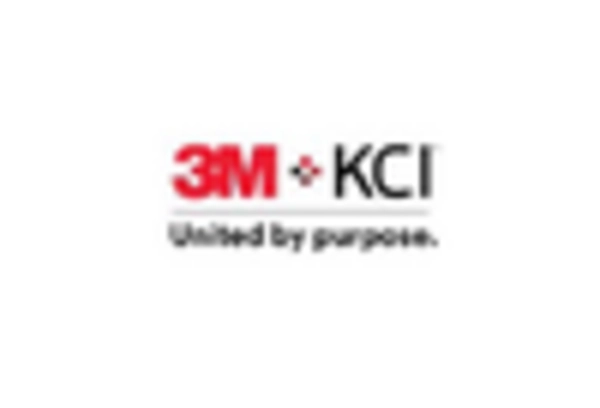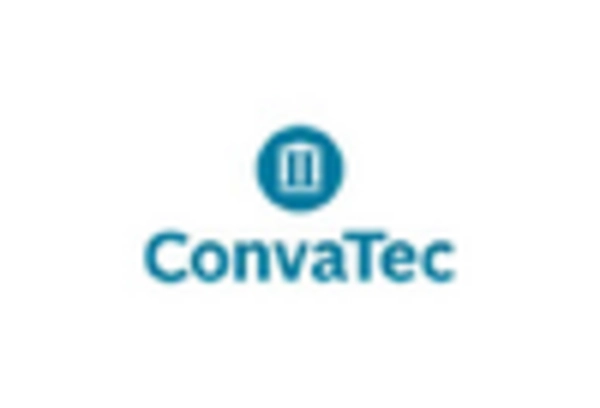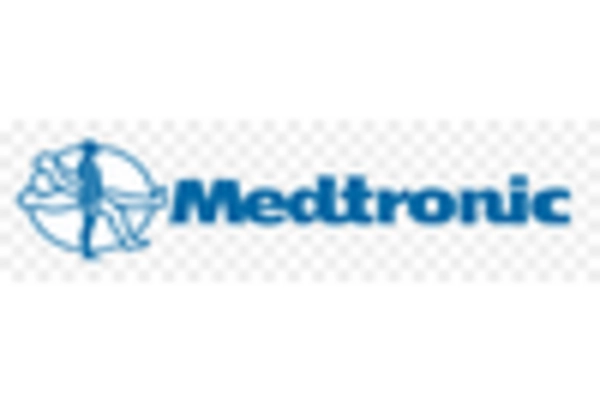Growing Geriatric Population
The aging population is a significant driver of the Interactive Wound Dressing Market. As individuals age, they are more susceptible to chronic wounds, such as diabetic ulcers and pressure sores. The World Health Organization projects that the number of people aged 60 years and older will double by 2050, reaching approximately 2 billion. This demographic shift necessitates effective wound care solutions, leading to increased demand for interactive dressings that cater to the unique needs of older patients. Consequently, the Interactive Wound Dressing Market is likely to expand as healthcare systems adapt to provide specialized care for this vulnerable population.
Increased Focus on Infection Prevention
Infection control remains a critical concern in wound management, propelling growth in the Interactive Wound Dressing Market. The rise in antibiotic-resistant infections has heightened the need for dressings that provide antimicrobial properties. Products that incorporate silver or honey, known for their antibacterial effects, are increasingly favored. Market data suggests that the antimicrobial wound dressing segment is expected to witness a compound annual growth rate of over 8% through the next few years. This focus on infection prevention not only enhances patient safety but also aligns with healthcare policies aimed at reducing hospital-acquired infections, thereby driving the Interactive Wound Dressing Market forward.
Technological Advancements in Materials
The Interactive Wound Dressing Market is experiencing a surge in technological advancements, particularly in the development of innovative materials. These materials, such as hydrogels and bioactive dressings, are designed to enhance moisture retention and promote faster healing. The integration of smart technologies, including sensors that monitor wound conditions, is also gaining traction. This trend is supported by data indicating that the market for advanced wound care products is projected to reach approximately 12 billion USD by 2026. Such advancements not only improve patient outcomes but also drive demand within the Interactive Wound Dressing Market, as healthcare providers seek effective solutions for complex wound management.
Enhanced Patient Awareness and Education
Patient awareness regarding wound care is improving, which is positively influencing the Interactive Wound Dressing Market. As individuals become more informed about the importance of proper wound management, they are more likely to seek advanced treatment options. Educational initiatives by healthcare providers and organizations are playing a crucial role in this shift. Increased awareness has been linked to better health outcomes, as patients are more proactive in managing their wounds. This trend is expected to continue, leading to a greater demand for interactive wound dressings that offer user-friendly features and improved healing capabilities, thus propelling the Interactive Wound Dressing Market.
Rising Incidence of Diabetes and Obesity
The prevalence of diabetes and obesity is on the rise, contributing to an increased incidence of chronic wounds. The Interactive Wound Dressing Market is directly impacted by this trend, as diabetic patients often experience slow-healing wounds that require specialized care. Data indicates that the global prevalence of diabetes is expected to reach 700 million by 2045. This alarming statistic underscores the urgent need for effective wound management solutions. Interactive wound dressings that facilitate healing and reduce complications are becoming essential in treating diabetic ulcers, thereby driving growth in the Interactive Wound Dressing Market.


















Leave a Comment